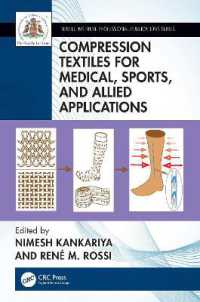基本説明
This book proposes an notion of inverse that differs from two widespread positions found in descriptive and typological studies. The third stance takes both grammar and pragmatic functions into account, but it also relates the opposition between direct and inverse verbs and clauses to an opposition between deictic values, thereby achieving two advantageous goals: it meaningfully circumvents one of the usual analytic dilemmas, namely whether a given construction is passive or inverse, and it refines our understanding of the cross-linguistic typology of inversion.
Full Description
This book proposes a notion of inverse that differs from two widespread positions found in descriptive and typological studies (one of them restrictive and structure-oriented, the other broad and function-centered). This third stance put forward here takes both grammar and pragmatic functions into account, but it also relates the opposition between direct and inverse verbs and clauses to an opposition between deictic values, thereby achieving two advantageous goals: it meaningfully circumvents one of the usual analytic dilemmas, namely whether a given construction is passive or inverse, and it refines our understanding of the cross-linguistic typology of inversion. This framework is applied to the description of the morphosyntax of eleven Amerindian languages (Algonquian: Plains Cree, Miami-Illinois, Ojibwa; Kutenai; Sahaptian: Sahaptin, Nez Perce; Kiowa-Tanoan: Arizona Tewa, PicurÃs, Southern Tiwa, Kiowa; Mapudungun).
Contents
1. Foreword; 2. List of abbreviations; 3. Introduction; 4. I. Alignment and direction; 5. II. A theory of direction; 6. III. Algonquian languages; 7. IV. Kutenai; 8. V. Sahaptian languages; 9. VI. Kiowa-Tanoan languages; 10. VII. Mapudungun; 11. VIII. Conclusions; 12. Appendix 1: Algonquian paradigms; 13. Appendix 2: Analysis of Kiowa personal prefixes; 14. Appendix 3: Optimality-theoretic syntax of inverses; 15. References; 16. Language index; 17. Author index; 18. Subject index








